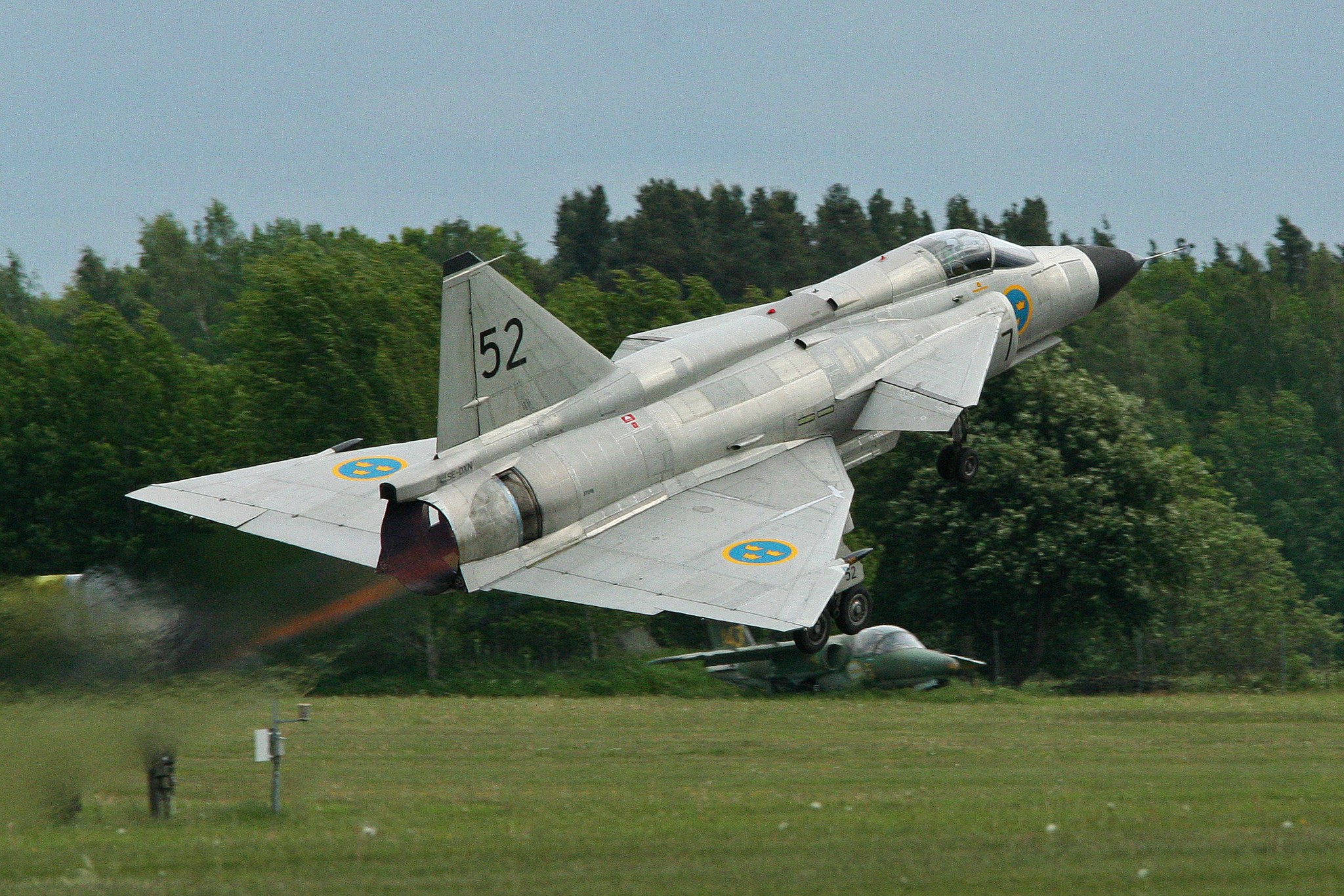The Swedish Air Force is a force to be reckoned with. True, at the beginning they were mainly importing foreign designs. But soon, they created iconic designs such as the J22 and the J21.

The SAAB 21 is a twin-boom pusher fighter and attacker designed by the famed Swedish engineer Frid Wänström, who also worked on the SAAB 29 Tunnan, 32 Lansen, 35 Draken and 37 Viggen. In the anticipation and wake of World War 2, Sweden was concerned over its neutrality policy coming under threat by the other European countries, specifically hostile ones such as Nazi Germany. In order to deter belligerent forces and potential aggressors, the Swedish Air Force created a major plan to modernize their fleet, which included the import of foreign models such as the Italian CR.42 and Re.2000 as a stopgap measure. Meanwhile, Swedish corporation SAAB began studying designs for the possible development of a new, high-performance fighter aircraft. Most of the designs were based around the Bristol Taurus two-row 14 cylinder radial engine developing around 1,000~1,100 horsepower. The most promising design was a twin-boom pusher layout and made use of many new features unfamiliar to the SAAB technicians and engineers at the time, but was able to compete with the other fighter aircraft at the time while also maintaining several advantages such as a heavy amount of nose-mounted armament and superior pilot visibility, along with ease of maintenance. The design was kept dormant until 41, as Sweden was beginning to see that it would not be able to procure improved foreign models as a result of the war, they started another rearmament program to adopt advanced indigenous fighter aircraft. Accordingly, SAAB blew the dust off of their old twin-boom design and set to work. Earlier on, it was decided to replace the Bristol Taurus with an American Pratt-&-Whitney Twin Wasp, but this was changed when the engine manufacturer Svenska was requested to provide an alternative engine, which was difficult due to the time constraints. Thus, they decided that a licensed engine would be the best course of action. The legendary German Daimler-Benz DB 605 that powered many famous designs was chosen and modified to fit Swedish needs. Three prototypes were completed and its maiden flight was completed in 1942. The type was delivered in 1945, and a total of 300 models were produced.

During the 1960s, advances in technology occurred rapidly alongside the aviation industry, paving the way for more complex and capable designs. In order to keep up with the rest of the industry, SAAB had to develop aircraft at a constant pace, often coming up with replacements before the predecessor had even entered service. The SAAB Viggen was sought to be the replacement for the A32A and was being considered as early as 1952. The decision of whether to make a fighter or attacker design continued for years. By the end of the '50s, project 1500 started to show potential, with a delta wing design capable of performing multiple roles through different versions. The wing design would allow for short-distance take-off and landings, following the BAS60 roadbase system requirements. These also included all-weather capability and full coverage of the 2,000 km Swedish coastline.The 37-1 prototype took to the skies in February of 1967. The design still had to go through extensive modifying before the plane could reach the production line. The canards were angled, the wing adjusted, and the fuselage bent slightly. Much of the unorthodox appearance of the Viggen arrived from the extensive testing done on the first prototypes. When finalized, an order of AJ37 Viggens was handed over to F7 Skaraborg, becoming the first division utilizing the aircraft. With the Viggen successfully replacing ageing attack and reconnaissance aircraft, the focus shifted towards the replacement of the J35 Draken. This required extensive modifying of the Viggen as a whole, as the requirements for an interceptor wouldn't be met with the powerplant and avionics used in the already existing variants. The project was extensive, redesigning most areas of the plane to fit these specifications. SAAB had to fit an internal gun, an air-to-air radar, and a new flight computer which allowed a real-time data-feed between ground stations and flight groups. One of the more complicated adjustments was the powerplant, where the engineers had to install an additional fan stage. This helped counteract the compressor stall the RM8 engine often experienced at high angles of attack, allowing the JA37 to dogfight more comfortably. These modifications were expensive, exceeding the set budget several times. But SAAB pressed on with the design until the version was fully developed.The first completed JA37 flew on November 4th, 1977. The first service variants were delivered to F13 Bråvalla in June of 1980, while F17 Blekinge and F21 Luleå received theirs in 1981 and 1982 respectively. The JA37 would go on to be the most produced variant of the Viggen, with 147 aircraft delivered between eight different divisions. The JA37 was highly appreciated by those who flew it, and saw many modifications that extended its lifespan. As the 80s came to an end, the Viggen platform began to require an overhaul to bring the capabilities closer to that of other countries. The Gripen project was still years away from being completed, so an upgrade program began that would involve all JA37 in continued service being upgraded to the JA37C standard. This package introduced countermeasures, and a new signal processor, allowing the radar to track more efficiently against enemy jamming. The radar could now follow multiple targets simultaneously and also display virtual targets to enhance pilot training. This variant of the JA37 would see use up until the end of the decade, still being a capable platform for its time.

